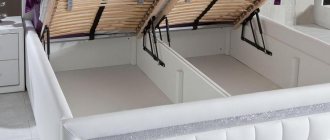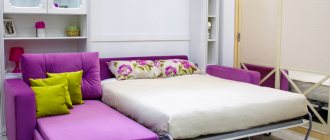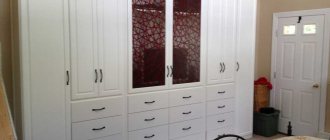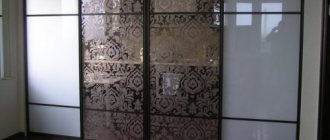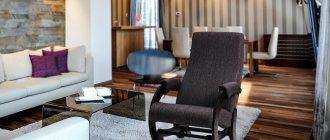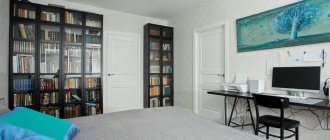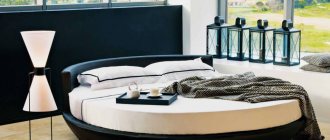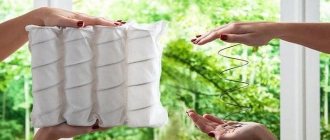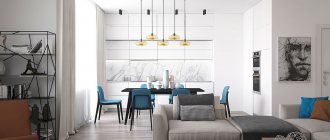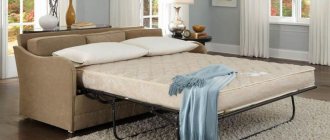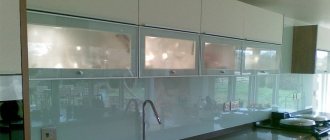In any apartment or private house there is a room that is especially loved and in demand by household members. Kitchens with painted facades personify the hostess, demonstrating well-groomedness and neatness. The owner of such a stylish room is characterized as a caring person who loves his family and the house in which he lives. A bright and clean kitchen is the key to good health and good mood. You always want to visit such people, chat and consult on any issue. Experienced psychologists say that a family that keeps its kitchen clean knows how to take care not only of itself, but will always come to the aid of others.
Painted facades belong to the budget price category, but individual sets can be close in cost to solid wood, for which there are certain reasons
Materials for making kitchen furniture
The main materials from which kitchen furniture is made are wood of various species, MDF and chipboard. Each of these options has its own advantages and disadvantages.
Tree
Wooden kitchen facades have always occupied a leading position among all materials for furniture manufacturing. Their advantages are difficult to exaggerate, because... This raw material has proven itself over many years of operation. With proper processing and thorough drying, kitchen facades will not bend or crack. Wood very easily takes the desired shape, so carpenters are happy to use it to make carved facades with the most intricate figures. A huge advantage is that wooden products can be easily updated with painted facades. A kitchen made from this material is durable and always modern. One hundred percent argument in favor of a wooden kitchen set is that this material is environmentally friendly. This factor not only does not harm health, but also strengthens it. It has been proven that when interacting with wood, an additional surge of strength and energy appears, which is so necessary for everyone in the era of chemical substitutes for natural materials. The only drawback of a wooden set is its considerable cost.
Natural wood facades can be restored independently
MDF
This material is a wonderful invention of our time. It is based on wood dust, compressed under the influence of hot air. Such raw materials are very durable and easy to process, giving kitchen products intricate shapes. A kitchen with MDF furniture is multifunctional and durable. It is not afraid of temperature changes and high humidity, is easy to wash, does not crack, and the corners and edges of facades do not break off. The fastening mechanisms hold securely for many years of use, because The monolithic plate firmly holds the fastening screws and bolts. Such furniture can be easily restored, given the desired shade to painted facades, and inlaid with moldings and carved patterns. Painted kitchen facades will perfectly update the interior, make it bright and stylish, and also allow its owner to demonstrate his creative skills in the original design of the kitchen. The only controversial drawback is the relatively high price and the ability of painted facades to fade under direct sunlight. Experienced craftsmen recommend not skimping and purchasing high-quality kitchen furniture that will last for decades, and lightened surfaces can always be updated with painted facades.
MDF panels can imitate absolutely any material
Chipboard
This material is made by gluing together pieces of shavings of different sizes. The plate turns out to be very brittle and does not bend under the influence of hot air, therefore it is not used for the production of complex models with facades decorated with carvings. The functional properties of chipboard are also very questionable. This material does not tolerate high humidity and temperature changes. The result is a disposable option that cannot be restored and a painted analogue is not able to update the kitchen. The only advantage of a chipboard kitchen set is its low price. But since the miser pays twice, experienced craftsmen recommend purchasing higher-quality material for the kitchen, so as not to update it every year and not spend effort creating a painted version.
Kitchen sets based on chipboard, in principle, cannot last long, but are still popular due to their low cost
MDF material
The most important characteristic is the fact that MDF furniture facades are absolutely environmentally friendly.
Furniture boards are produced by pressing, and gluing occurs using wood resin and paraffin. This material is easy to process; it can be bent into semicircular shapes and even milled facades with exotic patterns can be made.
Advantages of MDF kitchen facades:
- Long service life while maintaining appearance
- Easy care. Simply wipe with water or detergent
- Does not absorb unpleasant odors that may appear in the kitchen
- Painted MDF facades for the kitchen do not need to be replaced if they are very worn, but simply repainted
- Resistant to temperature and high humidity
Materials for covering kitchen facades
Having dealt with the options for the main material for the manufacture of kitchen furniture, you need to decide on the coating of the facades. The most common are plastic, film and painted analogues. The plastic coating is easy to clean, is not afraid of moisture, and also has a low price. The disadvantage is increased fragility, fading under sunlight and increased toxicity due to the evaporation of harmful chemicals. Self-adhesive film is very easy to use; you can cover facades yourself at home. It is easy to clean and does not absorb foreign odors and is a budget option. A significant disadvantage is its fragility, because with the slightest damage, scratches and breaks appear on it. It peels off easily, and with high humidity or increased temperature it can form bubbles and folds.
Both plastic and film facades can be bent, but figured milling is an attribute of modern technologies
The most practical and reliable option for the kitchen are painted facades. It is proposed to dwell on this method of decoration in more detail.
The most popular types of MDF facade surfaces
Matte
An option for those who prefer practicality; scratches and other minor damage are less noticeable on the matte surface. In addition, the matte shade promotes relaxation and creates a calm atmosphere in the kitchen or dining room.
Glossy
Glossy shine visually expands the space; sparkling surfaces create an atmosphere of cleanliness and shine. A combination of façade elements is possible, for example, the front part is made of glossy slabs, and the side part is made of matte slabs.
Patina
The facade with patina gives the set a noble look, this is a choice for lovers of antiquity and classics. With the help of the aging effect, new furniture will look like antique furniture and evoke associations with expensive antiques. Manufacturers of facades can do patination in various styles - antique, Provence, Victorian. Patination looks better on matte furniture.
Like any type of modern furniture, colored facades have their pros and cons. Let's look at the advantages and disadvantages of painted facades in more detail.
Advantages of painted furniture
Painted kitchen facades, photos of which can be viewed on the website, can be made of various materials. These include acrylic paints such as glossy, matte and pearlescent, as well as patina and craquelure to create an antique effect. Such decorative raw materials have a lot of advantages that allow you to use furniture with painted facades for a long time and with high quality.
- Painted kitchens look new and very stylish. This effect is created by the huge range of paints offered today in construction stores. The color range is presented in a variety of shades, which allows you to decorate the painted facade to suit the taste of the most demanding owner. Brilliant gloss and elegant mother-of-pearl, antique craquelure and patina, as well as a velvety matte sheen will make the painted facade extremely creative, especially if you skillfully combine these materials. A pattern or ornament applied to the surface of painted facades will add uniqueness.
- A very important aspect is the environmental cleanliness of the kitchen, the painted facades of which do not emit substances harmful to health. The paints are made from natural raw materials, so painted facades are absolutely resistant to high humidity and temperature changes in the kitchen.
- A kitchen with painted facades, for which high-quality paints were used, is not afraid of mold and is absolutely resistant to rot. It also does not absorb odors and water, is not damaged by external influences inherent in the specific nature of kitchen premises during cooking, and is practically not deformed.
- The cooking area is always subject to increased contamination in the form of splashing fats or settling of soot. Constant wet cleaning is necessary to keep furniture tidy and clean after renovation. A kitchen with painted facades is easy to wash and clean, so there will never be problems in terms of order.
- A very important advantage of painted facades is a perfectly flat surface that can be restored at any time, and this is easy to do with your own hands. It is enough to have the desire and read some useful tips.
Painted facades of kitchen units are often not inferior in appearance to more expensive analogues
Disadvantages of painted furniture
Painted facades of kitchen units have several very dubious shortcomings, which can easily be overcome or converted into advantages.
- The biggest disadvantage is the fairly high cost. Not everyone can afford painted facades, but if there is such an opportunity, it is not recommended to save. Such a kitchen will last for many years, maintaining its beautiful appearance and demonstrating extraordinary wear resistance, not to mention its environmental safety of painted facades.
- The surfaces of painted facades can fade when exposed to direct sunlight, so it is recommended to either place the set away from them, or choose a suitable color, or decorate the kitchen in Provence, country, eco or other antique styles.
- Painted facades can be damaged due to exposure to chemical detergents, so you should treat them very carefully and select materials for washing, carefully reading the composition and intended use.
Despite some disadvantages, covering facades with enamel is one of the most common methods of finishing kitchen units
Blog
Painted MDF facades differ in color, as well as in the depth and complexity of milling, so that with their help you can create a set in almost any style (difficulties will arise with very specific styles, for example, loft).
Let's consider the main characteristics of style directions:
| Classic | Rustic | Modern | Exotic | |
| Style options | Classic, neoclassical, baroque, empire, rococo, art deco. | Country, rustic, chalet, rustic. | Minimalism, high-tech, avant-garde, Scandinavian. | Loft, oriental, Memphis, African. |
| Materials and texture | Natural wood, precious metal, glass. | Natural wood, glass, minimal metal. | Wood, plastic, metal, glossy surfaces. | Wood, skins, metal, rough texture. |
| Decorations | Arc milling, carving, stained glass, sandblasting, patination. | Carving, direct milling, painting, stained glass, household items. | Color, smooth facades, complex filling of cabinets. | Household elements, color, dark metal, textured wood. |
| Colors | Natural wood, pastel colors, black, gold, silver. | Pastel colors, natural wood, bright accents. | Any depending on the concept. | Dark, bright, depending on the ethnic group and concept. |
| Accessories and handles | Metal, complex shape. | Wooden, metal, simple shape. | Plastic, metal, glass of simple shape. | Wooden, metal, simple shape. |
The classical style implies the massiveness of all elements, allows patination and stained glass, but requires adherence to the principle of symmetry and the golden ratio. Patination is a covering with a layer of patina, as if formed naturally over time. The patina emphasizes the milling lines and wood texture.
- Classic and neoclassical: shades of natural wood, symmetry, severity of forms.
- Empire: dark colors, straight lines, heraldry, bas-reliefs depicting battle scenes and weapons.
- Art Deco: elongated lines, gold on black, lots of glass.
- Baroque: abundant twisted decorations, light colors.
- Rococo: marine motifs, light and green tones, bas-reliefs with cherubs, rocaille.
Modern styles dictate the abandonment of milling, but allow any color combinations and materials. Very often surfaces have a bright, even mirror-like shine.
Rustic styles are more like classic ones, but with ethnic elements.
- Provence: white or blue, imitation lathing and boards.
- Country: rich colors, most often shades of brown, the most coarse shapes.
- Rustic: blue, green, brown colors, imitation herringbone joint.
Of course, these are not all possible options. Designers can offer exotic and eclectic solutions, place different accents, and add details.
Attention! This option is not suitable for chalet, loft and rough versions of rustic styles - the enamel hides the natural texture of the wood.
Facade care
Step-by-step instructions for painting furniture facades
For painted facades, it is recommended to use acrylic or automotive paints. You will also need putty, primer, sandpaper, solvent, laundry soap, spatula and brush.
Painting should begin by removing the facades from their hinges for easy access from all sides. Wash the removed doors thoroughly with soap and treat with a solvent to degrease the surface. Then it is recommended to sand the facade with sandpaper, remove all cracks and depressions with putty, let it dry and sand again.
Step one - sanding
The next step will be priming. This process will help level the surface as much as possible and significantly save paint consumption.
Step two - primer
After the primer has completely absorbed, the first coat of paint must be applied. It is recommended to purchase it in aerosol packaging, because... this will allow the paint to spread evenly over the surface. If coating needs to be done with a brush, then it must be done in one direction. After complete drying, you should sand the surface again and apply another layer of paint.
Step three - painting
The last step will be to varnish the facades (optional). Complete drying of painted facades occurs after 24–48 hours. Then you should carefully hang the finished painted facades on the hinges in their original position. This classic coloring is the basis, but if you have the skills, you can apply more original options.
